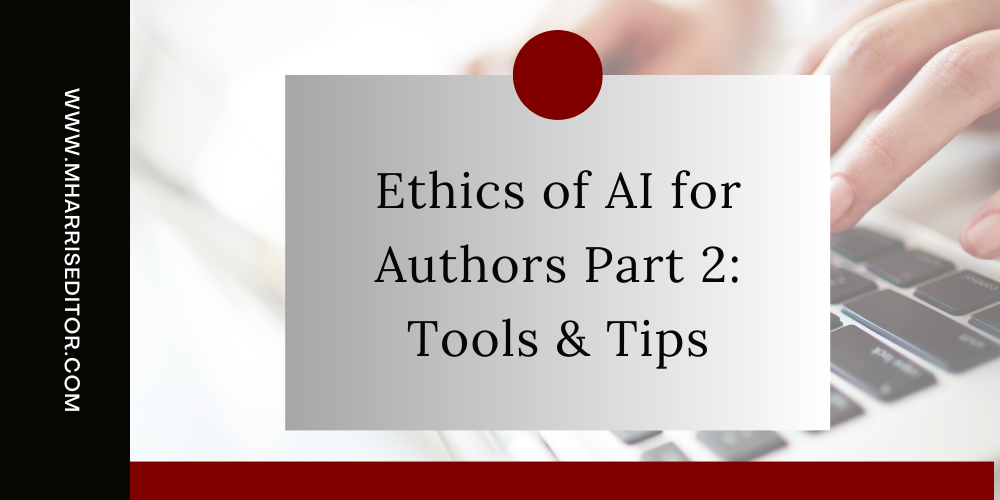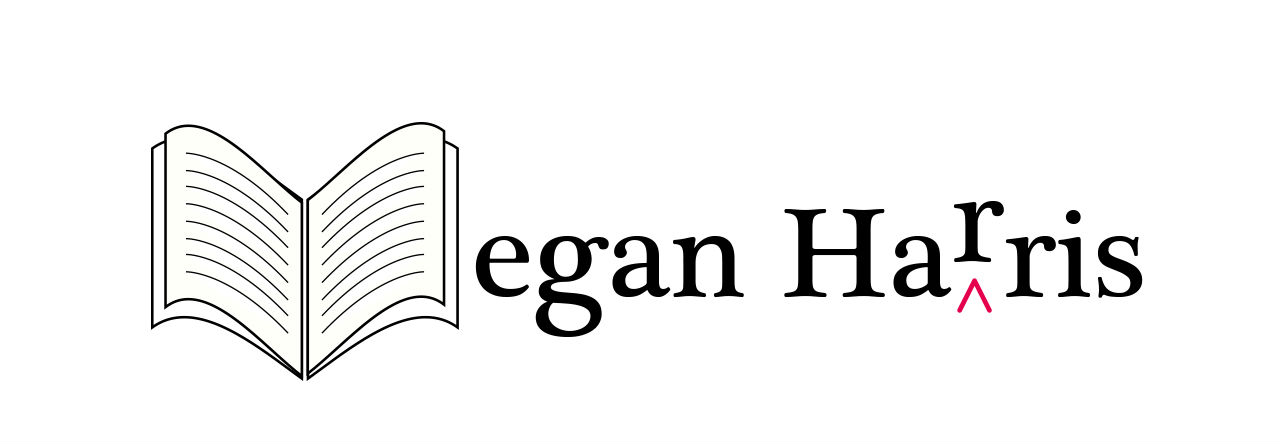
In Part 1 of this series, I went in depth about the ethics of AI for authors, including the pros and cons of the ways using it impacts creative work. In this second part, we’re diving into tools and tips on using it ethically as part of your writing and publishing process.
Ways to Use AI Ethically
So if we want to use AI ethically, and we have some parameters on what that means, how can we see it in action?
First, understand what the technology can do and build out some ways to use it. Examples for using AI in your writing process might include:
- Outlines: Writing coach Jamie Morris has a great take on how to use ChatGPT to outline your novel. You may struggle with this or want to find a way to do this that structures your existing thoughts, and trying this method can help you partner with AI to make your vision a reality.
- Creating lists: It may seem silly but I have used ChatGPT to create meal plans based on the ingredients I have at home, and the same can be said for using it for other tasks or things you need to do. When you’re an author, you probably have a lot of things that need to be done, and using a tool to organize that work into a list saves so much time. Another great tool for creating lists is goblin.tools. This tool is awesome for neurodivergent folks specifically who need to break down complicated tasks into bite-sized pieces so you feel less overwhelmed.
- Organizing timelines and characters: With a ChatGPT login, you can keep track of various parts of your project that might be otherwise hard to find. Say you want to keep track of a character’s eye color or a weapon they have. You might keep it in a spreadsheet, but for a quick reference, adding it to ChatGPT and asking in the search function for that character information can also help you find it easily. (Some of these functions work better with GPT4, the paid version of ChatGPT.)
- Improving character development: As this article from Medium highlights, using a language learning model based AI like ChatGPT can allow you to create deep backgrounds for characters that aid in their development as you’re writing your book. Keep in mind that the software is suggesting additions rather than writing them for you, so if you don’t like what you see, you can always generate something else that better fits your vision of your characters.
- Ideating: If you’re feeling stuck or want some visual way to brainstorm, tapping into AI tools is a great way to do it. Want to envision your book cover? Use Midjourney or DALL·E 2 to put the ideas you have into a visual form. Brainstorm some ideas for upcoming writing you want to do? Use a generative AI tool like Jasper to
- Revise existing writing (to a point!): Some writers (like me!) tend to be a little wordy, and finding a way to summarize what you’re trying to say can be difficult. You can add verbose content into ChatGPT and ask it to shorten it for you in a way that makes sense. It may not give you exactly what you need, but it’s a starting point.
- Note: I add “to a point!” to this bullet as well because AI is NOT a substitute for your editing process. I do not recommend putting in huge chunks of writing into the software. Instead, find your longer-winded sentences and see if it can break them down into sensible pieces. Remember, AI tools are a helpful path forward, but you still need to put in the work to revise your work
- Creating bad writing examples: Maybe you’re dabbling into finding ways to help your fellow authors and want to show them what NOT to do when they write. However, purposely writing poorly can be a challenge, depending on what your aim is. You can use AI software to generate bad examples based on good ones you’ve written which can help you if you’re coaching someone else or want to share your insights.
- Specific voice/tone help: Marketing is often the bane of authors’ existences, and finding the right voice and tone is a challenge. However, using AI writing tools to help you create the voice and tone you want to use can make the marketing portion of being an author much easier. Think Like a Publisher has a good post about this topic.
Ethical AI Tools for Authors
When it comes to AI tools that have had some thought behind them in terms of ethics, the ones I’ve found and would recommend include the following:
- Canva’s Magic Design: While still in beta, Magic Design uses prelicensed assets to create graphics. No worrying about what sources you may be using. Canva makes it easy to create images and enhance videos. Canva Pro happens to be one of my favorite tools, so knowing the images sourced are meant to support creators means so much!
- Adobe Generative AI: Adobe’s FAQ related to their generative AI tools and submitting materials cites that submissions are only accepted if the submitter has rights to the assets, meaning you are more likely to find images and videos in Adobe’s suite of products that have been pre-vetted for approval that doesn’t interfere with copyright claims.
- Otter.ai: If you find yourself needing transcripts for any purpose, Otter is a great software to use for meetings and other voice to text needs, and their commitment to security and privacy makes them a reliable AI tool.
- AI Fairness Toolkit: Developed by IBM, the toolkit hosts many open source APIs, tutorials, and more for the tech savvy writer looking to up their game and expand into new areas.
At the time of this writing, there is more to be done to set parameters for AI use in every sector of the economy, so it’s no surprise that creatives would need some guidance for their own work in using AI in a way that minimizes harm. We can only hope that with time and improvements in technology we see a way to work with AI that fuels innovation while also giving authors, illustrators, and others in publishing a way forward with their goals.
Have an idea for a future blog post? Send me a message and I’ll look into it!
